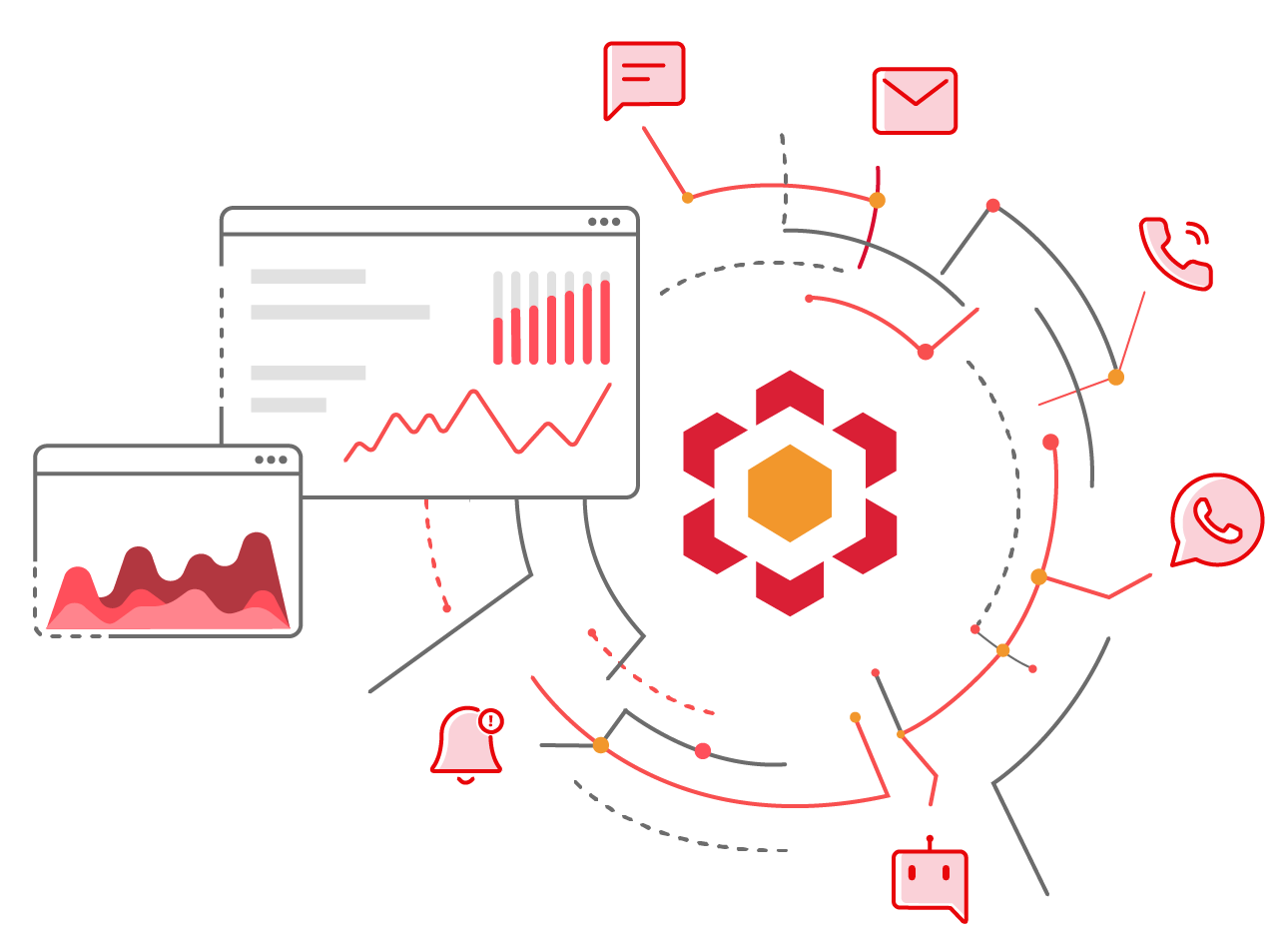When it comes to generating leads, capturing customer engagement, and driving conversions, promotional SMS campaigns can be a powerful tool for businesses. But in order for them to be successful, you need to know what metrics to measure in order to evaluate the impact that they are having on your bottom line.
In this blog post, we’ll look at the key performance indicators (KPIs) that will help you determine whether or not your promotional SMS campaigns are working as effectively as possible.
The Role of Metrics in Campaign Evaluation
Metrics play a vital role in evaluating the success of marketing campaigns, especially for promotional SMS campaigns. Metrics are forms of data that provide insights into the performance of a campaign, enabling you to make informed decisions.
By measuring the key performance indicators (KPIs) of an SMS campaign, you can understand how well it is performing and what needs to be improved. Because SMS campaigns are focused on driving engagement with customers, understanding the right metrics is even more crucial.
Without metrics, it’s impossible to know what’s working and what isn’t. With this in mind, it’s essential to track metrics like open rates, click-through rates, conversion rates, and revenue generated from SMS campaigns to help businesses make data-driven changes to their marketing strategy.
Ultimately, metrics tell us a story about our campaign’s success and can reveal new growth opportunities that would otherwise go unnoticed.
Key Metrics for Evaluating Promotional SMS Campaigns
When it comes to evaluating the success of a promotional SMS campaign, there are several key metrics that should be taken into consideration. These metrics not only give insight into the effectiveness of your campaign but also help you make informed decisions for future campaigns.
Delivery Rate
The Delivery Rate is the number of SMS messages successfully delivered to your recipient’s devices divided by the total number of sent messages. It’s typically expressed as a percentage.
Why It’s Important: The Delivery Rate gives you an initial indication of the reach of your campaign. If your messages aren’t reaching your audience, they won’t be able to engage or convert.
How to Improve It: Improve your Delivery Rate by maintaining a clean and updated list of contacts, ensuring the phone numbers are valid and active. Also, consider working with a reputable SMS provider known for high delivery rates.
Open Rate
The Open Rate is the percentage of recipients who open your SMS message out of the total number of delivered messages.
Why It’s Important: A high Open Rate signifies that your message is getting attention. It’s the first step towards engagement and conversion.
Tips on How to Improve Open Rates: Craft compelling message content, use personalization where possible, and send messages at optimal times when your audience is most likely to be attentive.
Click-Through Rate (CTR)
The Click-Through Rate is the number of recipients who clicked a link in your SMS message divided by the total number of delivered messages, expressed as a percentage.
Importance of CTR in SMS Marketing: CTR is a key indicator of how engaging your message is. A high CTR means your audience finds your content interesting and relevant enough to take action.
Strategies to Optimize CTR: Keep your messages concise and clear, incorporate a strong call-to-action, and ensure your linked content is valuable and relevant to the user.
Conversion Rate
The Conversion Rate is the percentage of recipients who completed the desired action (like making a purchase or signing up for a newsletter) after clicking the link in your SMS message.
Why It’s Crucial to Track Conversions: Conversion Rate is the ultimate measure of the effectiveness of your SMS marketing campaign. It indicates whether your messages are leading to the desired outcomes.
Ways to Enhance Conversion Rates: To boost conversions, ensure your offer is compelling, the landing page is easy to navigate, and the conversion process is simple and straightforward.
Return on Investment (ROI)
ROI measures the profitability of your SMS marketing campaigns. It’s calculated by subtracting the cost of the campaign from the revenue it generates and then dividing the result by the cost of the campaign.
Why It’s Crucial to Track ROI: ROI helps you determine whether the money you’re investing in your SMS marketing campaigns is yielding a profitable return.
Ways to Improve ROI: You can improve ROI by optimizing your campaigns for conversions, segmenting your audience to deliver more targeted messages, and testing different offers and messages to see what generates the best results.
Subscriber Growth
Subscriber Growth is the rate at which your SMS subscription list is growing. It’s calculated by subtracting the number of subscribers at the start of a period from the number at the end, divided by the number at the start of the period.
Why It’s Important: Tracking Subscriber Growth can help you understand how effectively you’re attracting new subscribers to your SMS marketing campaigns.
Strategies to Increase Subscriber Growth: To boost Subscriber Growth, promote your SMS program across all your marketing channels, offer an incentive for signing up, and ensure the sign-up process is simple and straightforward.
Opt-Out Rate
The Opt-Out Rate is the percentage of recipients who choose to unsubscribe from your SMS list during a given campaign.
Understanding Its Significance: A high Opt-Out Rate may indicate that your content is not resonating with your audience or that you’re sending messages too frequently.
Tips on Reducing Opt-Out Rates: To reduce opt-outs, segment your audience and tailor your content to each group, maintain a reasonable message frequency, and always provide value in your communications.
Response Time
Response Time measures the average time it takes for your recipients to respond to your SMS messages.
Why It’s Important: It’s particularly crucial for interactive SMS campaigns or customer service scenarios, as a short Response Time can lead to higher customer satisfaction.
How to Improve Response Time: To improve Response Time, ensure your messages are clear and compelling, and include a clear call-to-action to guide recipients on what to do next.
Utilizing Metrics for Campaign Improvement
Metrics provide valuable insights into the performance of your campaigns, allowing you to make informed decisions and improvements for future campaigns.
Analyzing and Interpreting Metrics
Interpreting your SMS campaign metrics involves more than just looking at the numbers. It’s about understanding what they signify and how they relate to each other. For instance, a high delivery rate coupled with a low open rate might indicate that your message isn’t enticing enough to prompt recipients to read it. Meanwhile, a high click-through rate with a low conversion rate might suggest issues with your landing page or offer.
When analyzing your metrics, consider the bigger picture. Look for trends over time rather than focusing on isolated data points. If your opt-out rate increases after a particular campaign, review the content and frequency of that campaign. If your conversion rate drops, consider whether there have been changes to your offer or landing page.
Using Insights to Improve Future Campaigns
The insights gained from your metrics analysis should directly inform your future SMS campaigns. For example, if personalization leads to higher open and click-through rates, consider how you can further tailor your messages to individual recipients.
If certain types of offers or content result in higher conversion rates, make a note to use similar strategies in future campaigns. On the other hand, if a high opt-out rate follows a period of increased message frequency, it might be a sign to reduce the number of messages you’re sending.
The Role of A/B Testing
A/B testing is a valuable tool in campaign optimization that allows you to test different elements and variations within your campaigns. This could include testing different message content, sending times, or even sender IDs.
By running A/B tests, you can determine which combination of elements yields the best results and incorporate them into your future campaigns. A/B testing also allows you to make incremental improvements rather than drastic changes, reducing the risk of negatively impacting your campaign performance.
Utilizing metrics and continuously analyzing and interpreting them is essential for improving the success of your SMS marketing campaigns. By using insights gained from metrics and incorporating A/B testing, you can continually optimize your campaigns and achieve better results. Remember to always strive for improvement and never stop utilizing metrics to measure and improve the impact of your SMS campaigns.
In Summary
We have covered vital performance metrics including Delivery Rate, Open Rate, Click-Through Rate (CTR), Conversion Rate, and Opt-Out Rate. These metrics offer valuable insights into various aspects of your SMS campaign.
It is important to note that these metrics are interrelated and should be considered collectively for a comprehensive understanding of your campaign’s performance. Consistent tracking, analysis, and application of these insights are essential for enhancing the effectiveness of your SMS marketing endeavors.
Implementing A/B testing also plays a significant role in refining your campaign strategy. This method enables you to make data-driven decisions and optimize your SMS campaigns based on what resonates most effectively with your audience.

Harish Thyagarajan
Content Marketer
Supercharge Your Communication!
Get in touch with our experts who strive hard to bring the very best in cloud communications technology to you.


